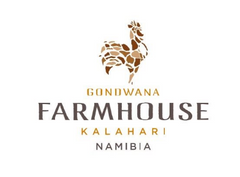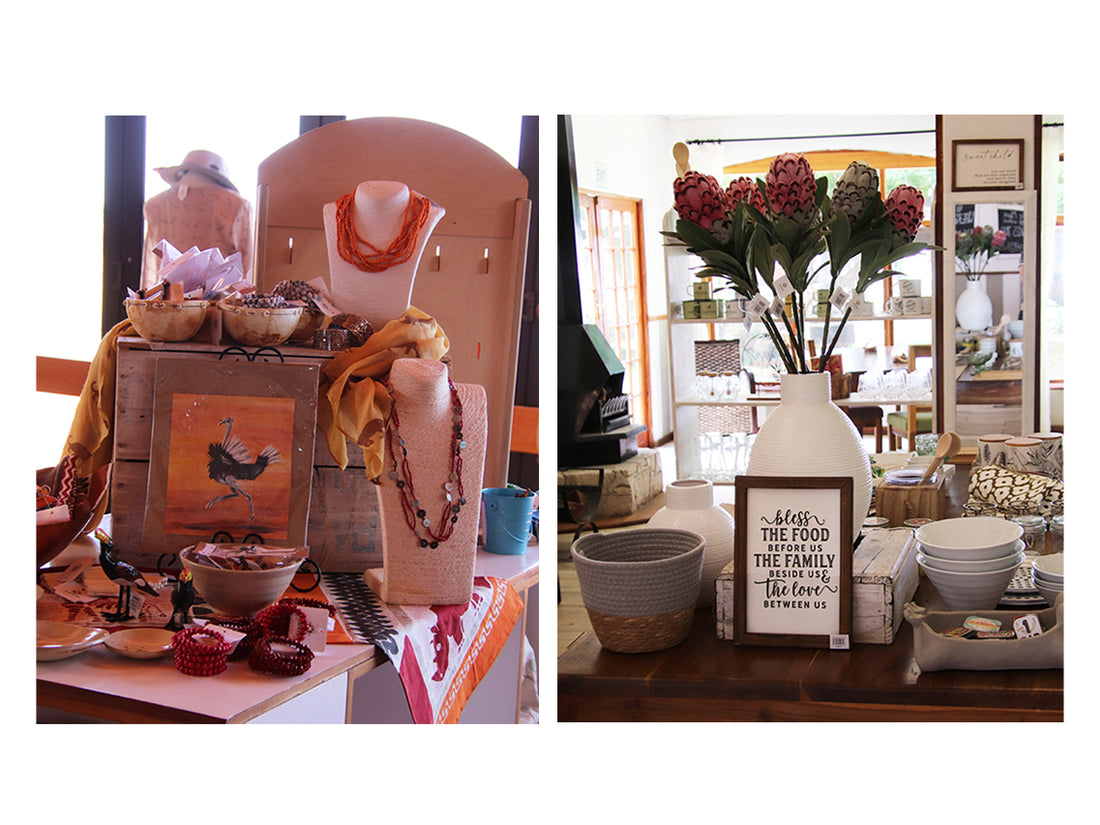One of the many pleasures of living in Namibia is that you can work and live in the capital Windhoek, and yet escape for the weekend to many different locations.
Maximum 3 hours away, one of my favorite directions is to follow the tar road South towards the Kalahari Desert. This leisurely drive allows you to shake off the weeks’ workload, put on some country music and look forward for a soul reviving weekend full of endless horizons and grounding your feet in the warm, red ochre sand.
Whilst driving, you leave behind the mountains of Windhoek which slowly make way for a semi-arid savanna landscape that is perhaps gently undulating at times but then clearly shows why it is called the Kalahari basin. Formed during the Cretaceous period 65-135 million years ago, there must have been a lot of weather changes with more arid and sometimes some humid spells. It is quite weird driving in the middle between the Namib Desert on your right and the start of the Kalahari Desert on your left. Although both are the product of the impact of cold Benguela current, they couldn’t be more different!
The agricultural town of Mariental is the community hub for many farmers operating in this area, but once we turn off just before it, we are being rewarded with a change in scenery. Here the semi desert shows ground depressions that are also called clay pans and vleis. The road then soon brings us to thick sand surfaces and linear fossil dune fields that make Namibia’s part of the Kalahari Desert so famous. And there you find yourself at the entrance of Kalahari Anib Lodge.


Rolling down your window, you are welcomed by the warm whisper of the Kalahari winds that accompany you to the organic wooden structure which holds the reception building of the Lodge.
Once parked under the shade of the ingenious solar panel system, you land with a soft thud in the sometimes very hot sand and you instinctively want to kick off your shoes. Is it a coincidence that the logo of the lodge features a bare foot and invites you to “feel closer”? I think not, as I later discover that the interior designer has purposely taken this brand essence through to the bar area where the cozy fireplace corners remind you to do just that.
With a rooibos infused ice tea in hand, I intently study the animal sightings board to see what previous guests have spotted on the game drives and this makes me sign up right away.
The reception area is one organic symbiosis of color and texture in interior and thoughtful ranges of retail items, each in their preferred corners.


One of those items that catches my eye is the range of locally made bracelets and necklaces from tiny golden glass beads and hand produced ostrich eggshell beads. The Khoisan still turn these little flat beads with a stick by hand, which gives them their beautiful roughness. Omba Arts Trust closely works with a community of Khoisan ensuring that the proceeds actually reaches the crafters.
Another colorful corner displays a variety of practical items such as oven gloves and cellphone bags from Indigenous Batik Design. This Zimbabwean company producing from Namibia is known for their beautiful sunset color designs. Did you know that batik involves a very labor intense process of mixing mealie flour into a fluid paste, with which the designs are drawn by hand on the unbleached cloth. Hand painting of all colors is then applied, after which the cloth is baked in the oven. Afterwards, the material is washed which exposes the design beautifully!

Shop the range HERE
There is so much creativity in all the wooden buildings to discover, but one of my favorites must the wide wall mobile in the main restaurant. This handmade masterpiece combines metal weaverbirds in their intricately woven nest & wooden laser cut camelthorn branches on strings of locally sourced karakul wool and paper mâché round shapes like the sun. Right there, it just really sums up the Kalahari for me.
I cannot help but be surprised by the welcoming greenery of the inner courtyard which is set between the lime rocks and red sand natural gardens in front of the rooms. Upon entering my dwelling, the Damara- Nama word ANIB which translates into “male bird” is reflected as the main theme inside and is most certainly not lost on me. Be it with the interesting wooden art on the wall, or the subtle bird themed vinyl securing my privacy in the bathroom, both are topped once I make a happy jump onto the bed and stare straight into the decorated mosquito net that makes me feel like I will be sleeping under a great old camelthorn tree just like the sociable weaverbirds do outside.
After a refreshing jump into both pools (why choose if you can have both?) I get ready for the sundowner game drive which has never disappointed me even after so many visits. But first I go back to the retail shop to compliment my outfit with the earthy polymer clay earrings that I have been eyeing for a while now. Adding a giraffe print scarf and the funky bird socks that will both protect me from the scorching sun and the well-known chill of the Kalahari after sunset, I hop onto the game drive vehicle eager to experience the sounds and smells that my soul hunkers towards.
The knowledgeable guides remind us all that technically we are not driving through a real desert because this area receives between 12 and 25 cm of rain yearly. Driving up and down the dunes, we spot just about all the antelopes happily grazing: from the tiny steenbok to pronking springbok and show off oryx, who always seem to look for trouble with the wildebeest. The drive takes us through a dry riverbed, and we spot lanky giraffe, some meerkats, a lone secretary bird and the impressive martial eagle soaring above us. All this game prompts me to make sure I bring my little nephew an ostrich soft toy from the shop before I go back, although I am sure he would think much more of me if I could bring him a real cape cobra snake! I will have to entice him with the fun fact that the ostrich has 3 stomachs and likes to eat little rocks, to help him with his digestion.
Stopping on top of a dune where the guides set up the bar in preparation for a must have gin and tonic, I stroll a way down the dune to find my perfect spot to celebrate yet another magical sunset in Africa. I cannot help but check over my shoulder towards the East as I am expecting a member of the Khoisan to pop up. After all, the Kalahari has been these hunters and gatherers’ home for over 20.000 years and the name we use is derived from their Tswana words Kgala, meaning “water”, and “Kgalagadi”, waterless place.
The source of this name keeps haunting me when I drive to Kalahari Farmhouse the next day. Driving past sheep farms (the karakul from this area is known worldwide), I notice an increase in crop production as well as horticulture. Raisins, apples, blueberries, lucerne and even pecan nut trees are under irrigation in the little town of Stampriet. Kalahari Farmhouse lies tucked in between these fields and under the shady protection of half a circle of fully grown palm trees.


The white cladded limestone chalets were added to the renovated farmhouse that once belonged to well-known SWA Administrator Johannes Gert Van der Wath. Upon a tour of the premises, I learned that Stampriet lies just about in the center of the Nossob aquifer which extends into Botswana and provides for very strong water underground. An artesian well was dug in 1912 right here allowing the water to rise within the well to a point above the top of the aquifer, and a channel of water meanders in front of the chalets and the grassy meadow.
All of a sudden it makes sense to hear that the Kalahari Basin starts in South Africa, through most of the Eastern part of Namibia and culminates through the biggest parts of Botswana. But who would have thought that the Okavango Delta with Chobe National Park and Moremi all form part of this incredible system? Again, this small Lodge’s motto “where goodness grows” was aptly chosen and it is great to see much abundance everywhere you look.
This charming place is so welcoming it makes you feel that you are visiting your family on the farm. Within the old style cottages lies a heart that beats quite fast though. The farmers residing around this small Lodge are modern and upbeat folks that may be rooted in tradition yet love humor and staying with the times. It is this eclectic feel you will come across entering the farmhouse bar, restaurant & reception.


The gift shop is well visited by locals who come and shop for something different other than what they can find in Windhoek. It is funny to see the funky t-shirts from Trali and Chompi as well as their beautiful cards and stickers with sayings in proper Afrikaans, the language that always says it like it is! Charlize Theron will be surprised to find that Afrikaans is very much part and parcel of Namibia.
Also in the shop you will find handmade beaded candle holders in the shape of aloe and proteas, alongside the ubiquitous enamel mug and cool chicken wire wall hangers. Do keep an eye out for the funny beer boot that can liven up any braai anywhere in the world!

Shop the range HERE
International guest looking for real, honest engagement with Namibians will enjoy having breakfast on the patio overlooking the gardens. Share your stories and experiences; after all you are amongst family.
Written by: Sonia Noirfalise-Corsini

